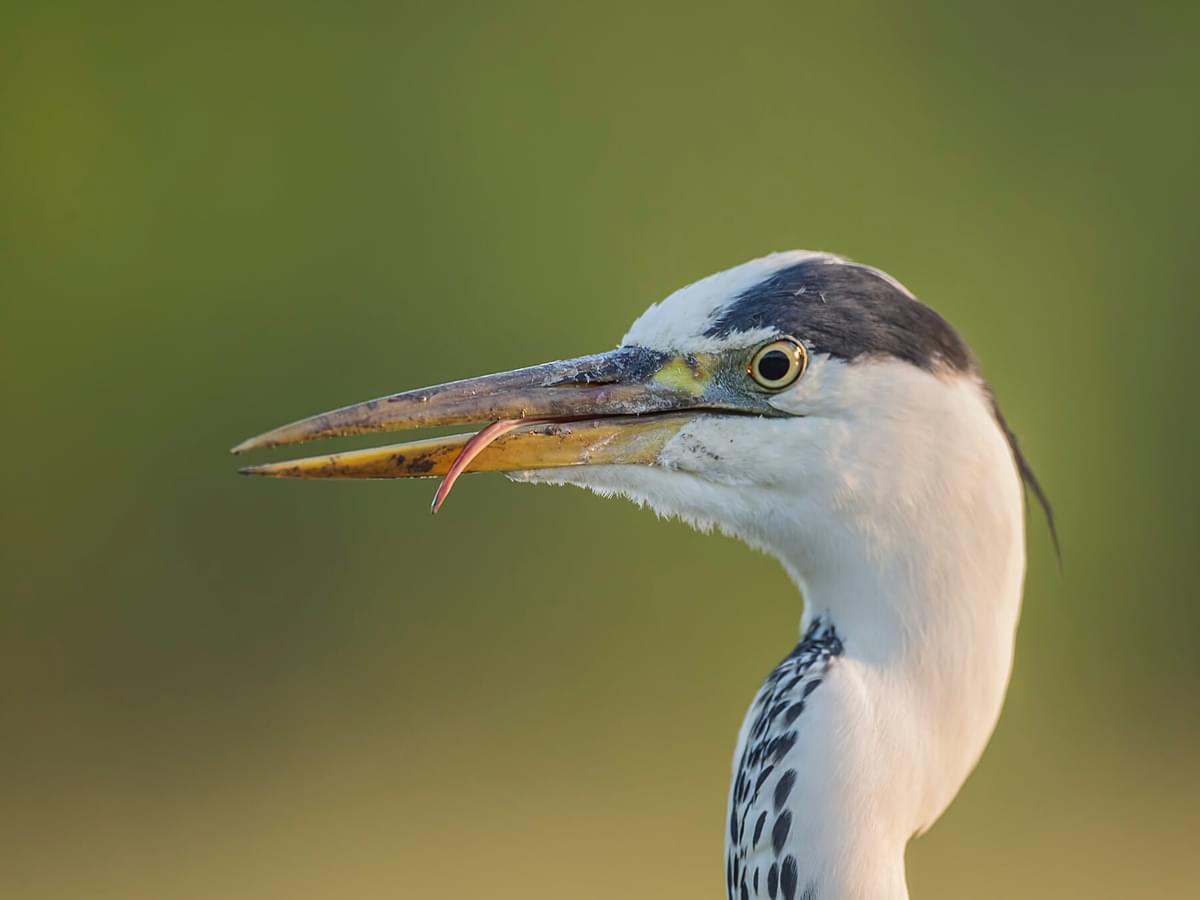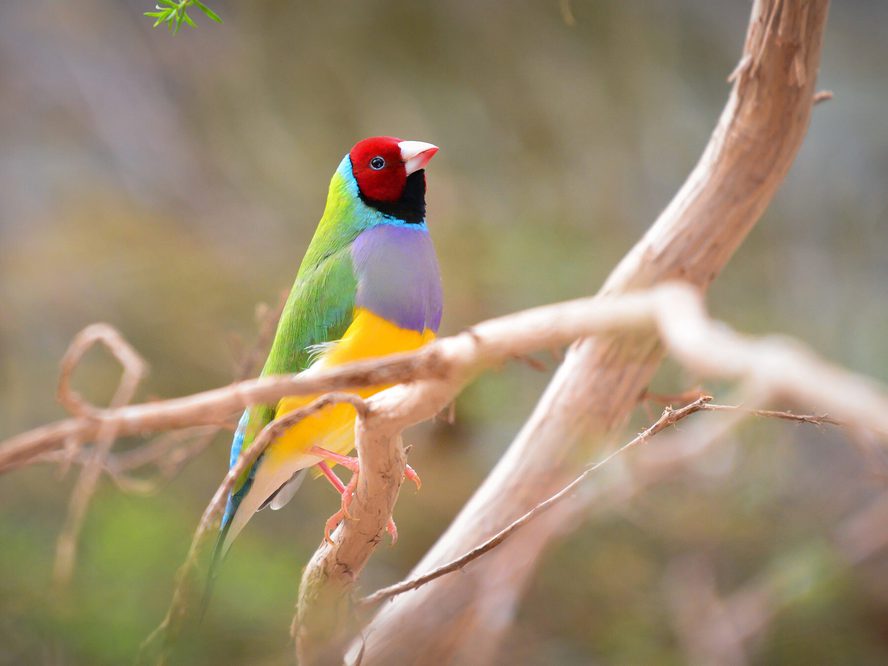Jump to Section
Do Birds Have Tongues? (6 Types + How They Are Used)
Last updated: 7 July 2022

When thinking about anatomical features that all birds share, the obvious answers would be feathers, wings, and beaks. But what about tongues? Do all birds have tongues? And if so, do all birds' tongues look the same or have the same function?
Read on as we investigate whether all birds have tongues and what birds' tongues are used for.
All birds have tongues. These range from incredibly long, retractable tongues of woodpeckers, used for catching bugs from deep inside holes in tree trunks, to the small, almost redundant tongues of flightless birds, such as emus, ostriches, and cassowaries.
Birds’ tongues come in a variety of shapes and sizes, and different surface textures, all of which are adapted to suit specific needs for foraging, eating, drinking, and – in some cases – communication.
Smooth while barbed tongues Parrots have muscular tongues that aid with eating seeds, as well as with communication.
To understand how birds’ tongues work and how different types of birds use them to forage, eat, and drink, please read on as we look at the mechanics of the often-overlooked anatomical features inside of a bird’s beak.

Woodpeckers have long, sticky tongues that help them get insects from hard to reach places
Different types of bird tongues
Birds’ tongues are adapted for different purposes and a range of environments and diets. Here are some of the more common tongue types.
- Grooved tongues: Vultures and eagles have a groove that runs down the center of their tongues, which allows them to suck marrow from the inside bones of the carcasses they feast on. As their feeding opportunities can be limited, they keep large quantities of food in the crop ( a storage organ in their throats). The groove in their tongues allows them to quickly push food through their beaks into the crop.
- Muscular tongues: Parrots have a fleshy, flexible tongue, which has a keratin tip at the end. This maneuvers itself into a spoonlike shape, and is used to grip seeds and grains, and hold them safely in their mouths. The muscles in a parrot’s tongue also play a key role in the bird’s ability to mimic human speech.
- Sticky tongues: The tip of a woodpecker’s tongue is coated in a sticky substance that helps them to trap insects from deep inside holes drilled in the trunks and branches of trees.
- Piston tongues: These straw-like tongues allow birds to suck water into their beaks without having to tilt their heads backwards. Birds with piston tongues include pigeons and flamingos.
- Nectarine tongues: Hummingbirds have long, tubelike tongues that allow them to suck up nectar from deep inside flowers and bird feeders. Some birds’ nectarine tongues have tiny brush-like projections near the tip, which are designed to quickly draw out liquid from the flowers they are feeding on.
- Lingual nail: This is not specifically a type of tongue, but a common feature of the tongues of some birds, including ducks, quails, chickens, geese, and parrots. This hardened tip at the end of the tongue stretches and contracts, enabling them to pick up and keep hold of grains and seeds without dropping them.

Eagles have grooved tongues (Bald Eagle)

Parrots have muscular tongues
Which birds don’t have tongues?
All birds do have tongues; however, the tongues of some birds seem not to serve any major purpose and are seemingly redundant. Large flightless birds, such as emus and ostriches, have tongues that are small and triangular, and do not even reach the edges of their beaks.
What do birds use their tongues for?
Birds’ tongues play a major part in how they forage for food and how the food is then digested. Tongues are adapted variously for drinking, sucking up nectar or bone marrow, scooping up grain, or trapping insects.
Many fish-eating birds, including several duck species, eat by filtering out mud from water, and their tongues play a key role in this process, filter feeding by pushing down their tongues to eject unwanted mud and water, while keeping the food underneath.
Parrots use their tongues in mimicking human speech. The flexible muscles in their tongues contract, allowing a vast range of sounds to be produced.

Calling Mallard with an open beak
What are some features of birds’ tongues?
Tiny hairs on a bird’s tongue, called papillae, grow around protein-digesting enzymes, and help to trap food particles which are then ground down during digestion. Some birds, including penguins and geese have a crest of papillae at the rear of their tongues, which facilitate easier swallowing.
Some birds, including penguins, geese and red-breasted mergansers, have tongues with serrated or barbed edges; to the untrained eye, these barbs may resemble teeth but are in fact keratin spikes, which allow the birds to securely grip onto foods, such as fish.
Birds have salivary glands in their beaks, located at the base of their tongue, which moisten food to aid swallowing and produce mucus that helps to prevent bacteria.

Red-breasted Mergansers have specialized tongues that allow them to grip onto fish
Which birds have the longest tongues?
The bird with the longest tongue on record is the Northern Flicker, a North American woodpecker species that forages on the ground for ants. Its tongue protrudes up to 10 cm (4 in) from the tip of its beak, and retracts to coil around the inside of its skull.
Long tongues are a common feature of woodpeckers, and other species may exist with even longer tongues not yet measured by scientists.

Northern Flickers have extremely long tongues
Do birds have taste buds?
Research has shown that birds do have taste buds and can distinguish between sweet and savory foods, as well as salty, sugary, fatty, and bitter foods. In contrast to mammals, where the taste buds are located on different parts of the tongue, a bird’s taste buds are mainly positioned on the roof or floor of their mouths. Some taste receptors are also present at the base of a bird’s tongue.
While humans have up to 10,000 taste buds, birds have far fewer – between 24 (chickens) and around 400 (parrots).
Do birds use their tongues to sing?
The anatomical structure of a bird’s mouth and throat includes a complex system of organs that work together to generate calls and song. Birdsong is generated by an organ called a syrinx, at the base of the trachea. The tongue and larynx do have a role within the avian vocal system, and are used to modify the sounds that are produced by the syrinx .
Tongue-clicking is a common behavior among parrots, cockatiels and cockatoos, and is generally thought to indicate a friendly, social interaction.

Female Eastern Bluebird with open beak and visible tongue
Do birds lick their beaks?
Many birds do not have tongues that would be long enough to reach the outside of their beaks, even if they wanted to use them in this way. While it’s not usual for birds to lick the outside of their beaks, they may use their tongues to clean the inside of their mouth.
Rather than using their tongues to clean the outside of their beaks, birds, such as parrots, can be observed to rub or wipe their beaks on branches, leaves, or the ground surface to remove excess food.
Bird Tongue FAQs
Do parrots have tongues?
Parrots tongues’ have a hardened, but flexible, tip, made from keratin, known as a lingual nail. This allows them to their tongue like a spoon, to scoop up seed and grain
Do crows have tongues?
All birds have tongues, and crows are no exceptions. One key way in which crows use their tongues to transport food to nestlings, holding food they have gathered beneath their tongue while they carry it back to their young.
Do sparrows have tongues?
Sparrows do have small tongues. They are pink and fleshy, without any grooves or barbs.

Yawning Pigeon showing tongue
Do pigeons have tongues?
Pigeons have “piston” tongues that work in a similar way to drinking straws. This enables them to drink water without needing to tilt their heads backwards.
Do birds have teeth?
Birds do not have teeth, but there may be ridges on the edges of their bills or tongues that enable them to grip food when foraging. They do not need teeth to chew, as they swallow their food whole. Food is ground in the gizzard, part of a bird’s stomach that plays an important role in the digestive system.





